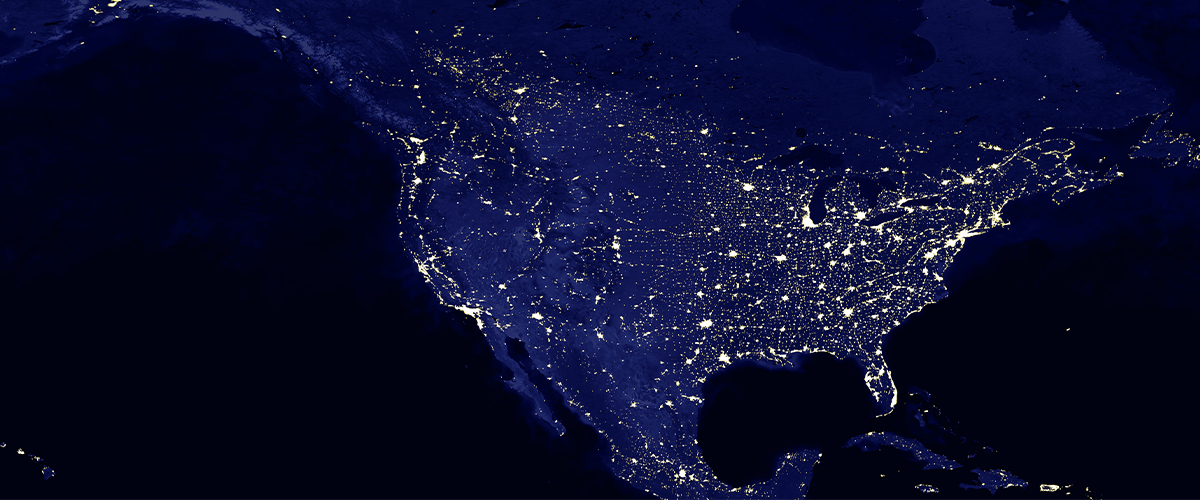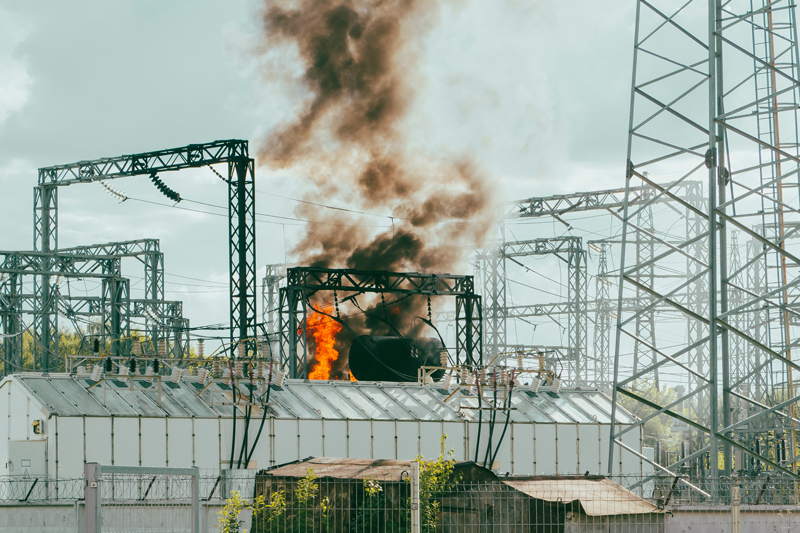Imagine that power goes out, not just locally but universally. The three major electric grids of North America experience cascading failures. How long does the blackout last? In the scenario of a major geomagnetic storm or high-altitude electromagnetic (HEMP) event, damage to transformers may be so extensive that it would take three years to manufacture and install equipment that would restore bulk power to full functionality.
In a matter of weeks, however, a large portion of the population would perish, due to lack of water, food, and medical care. While the COVID pandemic produced over a million causalities over a few years, a coast-to-coast grid failure — another type of low-probability-high-impact event — could cause 100 times that number of deaths in the span of just three months.
This worst-case scenario is considered by a recent meta-analysis of expert assessments on the resilience of the nation’s electrical grid. Over the years, congressional inquiries and independent analyses have attempted rational assessments of the likelihood of a prolonged grid failure, due to many possible threats: aging infrastructure, electromagnetic pulse from enemy attacks or sabotage, and geomagnetic storms. A recent meta-analysis summarizes the range of expert opinions from these materials.
In this post we will review the conclusions of this study in order to better understand US grid vulnerabilities. The academic review of scenario simulations, policy positions, and infrastructure conditions over the last few decades provides an unbiased overview of the topic and cites all available evidence. The paper helps to bring insight to some basic questions:
- What is the likelihood of a widespread domino-effect grid failure in the US?
- What are the major threats to current infrastructure?
- Why has policy and mitigation efforts lagged in addressing these vulnerabilities
Transformer Substations: Weak Links in the Network
The meta-analysis states that a simultaneous loss of just nine critical transformer nodes in one of several different configurations could trigger a coast-to-coast blackout as described in the introduction. Because of the interdependence of the three major grids of North America, failure in one area can have cascading effects to other regions.
While smaller, pole-mounted transformers are backed up by spares in warehouses, high-voltage (HV) substations exceed $10 million in cost and medium-voltage (MV) pad-mounted transformers cost around $200,000 each, so replacements are not readily at hand.
The study includes research into the procedure and costs for replacement of this transformer equipment, which is highly reliant on overseas manufacturing. Units may have a lead time of 12-24 months even if built domestically. Hence the estimate that full restoration after a widespread grid failure would take three years to accomplish.
Threats to Bulk Power Distribution
How would these weak nodes of the network fail? The meta-analysis includes all possible causes that would damage transformers, such as kinetic forces, either from conventional bombs or sabotage or from natural disasters.
As recently as 2021, cold weather caused rolling blackouts extending over 75% of Texas, making it the costliest ($195 billion) disaster in the state’s history and causing a total of 246 deaths.
The other category of threat — and according to the authors, grossly underestimated — is through Intentional Electromagnetic Interference (IEMI) or through natural geomagnetic storms caused by solar flares.
In both cases, a release of an intense amount of electromagnetic energy will induce electric current in any wire in the radius of the pulse. Circuit boards have delicate connections, so even a small amount of energy for an instant could well exceed their thermal limitations and overheat components. In colloquial terms, any electronic device would likely be ‘fried’ after a pulse and rendered inoperable.
Since this phenomenon has not yet occurred in the modern, computerized age (more on recent events follows in the next section), it requires an act of imagination to understand the implications. Gone would be phone and radio communications, GPS, and computers. The infrastructure of the Internet — datacenters — would deal a blow to societal and economic functions on many levels. Even vehicles may not start after a pulse event, since they now heavily rely on electronic controls.
A larger wave of electromagnetic energy, say from nuclear denotation in the atmosphere or a 100-year solar storm event, could induce very high voltages on distribution lines that would subsequently overheat grid equipment, causing transformers permanent and irreparable damage. Since a significant event would also cover a large geographic area, this means that the cascade of failures triggered by just a few nodes would almost certainly lead to widespread and catastrophic loss of the electric grid across North America.
A recent whitepaper from TSS USA Manufacturing outlines the perilous aftermath of a prolonged grid failure, which would plunge a world reliant on modern convivences into a brutal day-to-day fight for survival. An outed grid means no refrigeration, no reliable transportation or communication networks, quite possibly the loss of drinking water, sufficient medical care, and police protection. According to estimates from experts, this grid failure would spell death for millions of Americans and collapse society to a point in where it might take decades to recover a sense of security and economic stability.
Frequencies and Probabilities
Could a Carrington-size storm happen again?
One solar superstorm just did — and the Earth was just outside its path. In 2012, an enormous CME blasted through the ellipse of Earth’s orbit and struck a spacecraft, STEREO-A, which was able to capture evidence of the magnitude of radiant emissions.
The likelihood of a Carrington-level storm hitting Earth is now estimated at 12% per decade, which is a little more probable than a 100-year event. According to expert assessments, the risk is not uniform across the U.S. — some counties are 1000 times more likely to experience transformer damage during geomagnetic storms. Counties along the Washington D.C.-to-New York corridor are at the highest risk.
At TSS USA Manufacturing, we recognize the vulnerabilities of the national grid and the dire consequences of prolonged bulk electric failure. And we have the knowledge of HV systems and the newest technology to resist excessive current related to EMP events. To assess the resilience of your organization’s infrastructure, consult with a TSS technical expert.
In part 2 of this series , we will examine what the meta-analysis concludes about policy response to these threats and mitigative action implemented in the United States to limit the catastrophic consequences. We will try to determine whether or not the grid is adequately protected and what contingency plans are in place for an EMP event.



